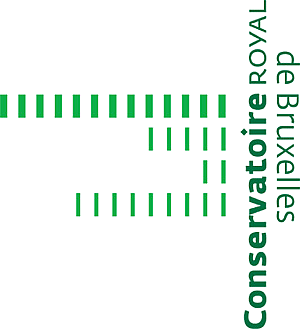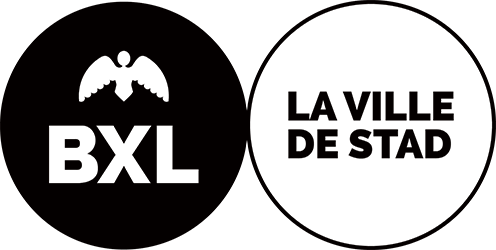Table of contents
Conventions and abbreviations 9
1. Part I: Basic principles of the chord theory 13
Table of contents 13
Preface 15
Introductory terminology 18
Tonal functional music styles 18
Practice and vocal music 23
Polyphony 25
1. Three-dimensional functionality 25
2. Formal aspects and models 27
3. Chords versus ornamentations 34
Triads 45
Root position triads 45
1. The resolution methods per connecting type 46
2. Root position triads – Sequences in the key 51
3. Root position triads – Standards 52
Sixth chords 65
1. Basic principles 66
2. Sixth chords – Sequences in the key 67
3. Sixth chords – Standards 68
Six-four chords 82
1. Basic principles 83
2. Six-four chords – Standards 84
Some tetrads 89
The dominant seventh chord 90
1. Basic principles and basic techniques 92
2. Seventh chord of V – Standards 96
3. Double dominant – Standards 97
4. Dominant seventh chords – Sequences 101
The seventh chord of II 102
1. Basic principles and basic techniques 103
2. Seventh chord of II – Sequences 105
3. Seventh chord of II – Standards 106
Alterations – altered chords 108
Durmoll and molldur 108
The double dominant 108
The Neapolitan sixth chord 109
Lowered VI in major 109
Modulations 110
Meaning and writing process 110
Diatonic modulation 111
Sequences 113
Sequence in the key 113
Sequence with modulation 113
2. Part II: Advanced chord theory 115
Table of contents 115
Continuation tetrads 117
1. Seventh chords of I and IV 117
1.1. The seventh chord of I 117
1.2. The seventh chord of IV 118
2. Seventh chords of III and VI 119
2.1. A periodic process 119
2.2. A modular process 120
3. Seventh chord of VII 121
3.1. The minor and diminished seventh chord of VII 121
3.2. The seventh chord of VII as double dominant 124
Pentad 126
1. Ninth chord of V 126
2. Ninth chord of III as D, a mixed sound of V7 and III 128
3. Ninth as ornamental note 129
Alterations – altered chords 131
1. A figure of speech and molldur 131
2. A rhetorical figure: cadentia duriuscula 132
3. Enharmony and the diminished seventh chord 133
4. S+, the specifically altered chord 134
5. D+, the altered chord of V (5#) 136
Modulations 137
1. Chromatic modulation 137
2. Secondary dominants 140
Sequences 144
1. Sequence and dominant ornamentations 144
2. Descending sequence 147
3. Ascending sequence 150
Part III: Ornamental theory & Topics 153
Table of contents 153
Ornamentations 154
1. Ornamental note versus ornamental chord 154
1.1. Ornamental chords 154
1.1.1. Figurative chords and meter 154
1.1.2. The dominant seventh chord 154
1.2. Ornamental notes 155
2. Suspension on a strong beat 157
2.1. Meaning and writing process 157
2.2. Ornamented resolution 161
2.3. Resolution in a different harmony 162
3. Ornaments on a weak beat 163
3.1. Passing note 163
3.2. Neighbour note 164
3.3. Escape neighbour note 164
3.4. Incomplete neighbour note 165
3.5. Turn figure 166
3.6. Anticipation 166
4. Appoggiatura on a strong beat 167
5. Nota cambiata – a combination of a weak and strong beat 169
6. Pedal point 172
6.1. Meaning and writing process 172
6.2. Bass pedal point 176
6.3. Soprano pedal point 179
Chromaticism and alteration – modulation – sequence 181
Enharmony and alteration – modulation – sequence 186
4. Choral standards after J.S. Bach 189
5. Vademecum of the rules of the general theory of harmony 197
Harmonic rules 198
Melodic rules 222
6. Justification and significance of the compendium 225
7. Justification and significance of harmony and counterpoint studies 243
8. Some fundamental concepts 258
8.1. Music theory, theory of harmony and pastiche composition 258
8.2. Music reproduction and reduction 261
8.3. Tonality and atonality 264
8.4. Modular and periodic processes 268
8.5. Parallel, unaccented and hidden fifths and octaves 271
8.5.1. Successive octaves, primes and fifths 271
8.5.2. Unaccented perfect octaves, primes and fifths 272
8.5.3. Hidden perfect fifth and octave 274
8.6. The harmonic dominant function 276
8.6.1. Meaning and writing process 276
8.6.2. Extraordinary resolutions of the dominant chord 279
8.6.3. Secondary dominants of the dominant or the circle of fifths 280
8.6.4. The harmonic omnibus 281
8.6.5. An extended dominant 282
8.7. Modulations and secondary dominants 283
8.7.1. Meaning and writing process 283
8.7.2. Ways to modulate 285
8.8. Alterations and altered chords 290
8.8.1. Meaning and writing process 290
8.8.2. The specifically altered chord 294
8.8.3. Mozart fifths 295
8.8.4. S+ en D in sequence via enharmonic modulation 295
8.8.5. S+ of II7 and the whole-tone scale 296
8.8.6. The Tristan chord 296
8.9. Sequences 298
8.9.1. Sequence phrase 298
8.9.2. Sequence modulus 298
8.9.3. Descending and ascending chromaticism 305
8.10. Cadences 307
8.10.1. Types of cadences 307
8.10.2. Cadences and styles 309
8.11. Chord connections and vocal movements 311
8.11.1. Types of chord connections 311
8.11.2. Ways to resolve connections of root position triads 311
8.11.3. Types of movements 314
9. Types of assignments 316
9.1. Then and now 316
9.2. The harmonic and complementary rhythm 318
9.3. Final cadences and change of meter 320
9.4. Left-hand key and deceptive cadence at the end 320
10. Formal analysis and creativity 321
10.1. Writing music is giving shape 321
10.2. Music speaks for itself 323
11. Exam tasks with realisations 324
11.1. Exams level 1 324
11.2. Exams level 2 329
11.3. Exams level 3 344
11.3.1. Bass assignments 344
11.3.2. Soprano assignments 360
12. Lexicon harmony and counterpoint teachers and written work in Flanders 379
Index of harmonic terminology 385
Timetable on tonality and atonality 391
Graph of tonality and western functional harmony 392
Index of names of authors mentioned 393
Be a part of our european project !
This European project (KA 203 Strategic Partnership) created by Salvatore Gioveni promotes cross-border collaboration in the field of Music Theory through sharing knowledge and transferring pedagogical innovation. It thus responds to a lack of centralised source and framework to deepen reflection by means of cross-disciplinary study at European and international level.
There is a significant wealth of educational practices from one country to another in this sector, especially in terms of harmonic musical notation and analysis. However, HMEI's are facing the nonexistence of a European network for pedagogical staff in Music Theory so far. To improve the situation, the project will among other things develop several intellectual outputs such as Online Platform (IO 1), an EU Bibliography (IO 2), a Repository Courses (IO 3), a Multilingual Glossary (IO 4) and an Exchange Online Learning Platform.
Besides the Conservatoire royal de Bruxelles as leader and manager of the project, the following partner institutions are involved: Music Academy S. Moniuszki Gdańsk (Gdańsk, Poland), F. Liszt Academy of Music Budapest (Budapest, Hungary), Estonian Academy for Music and Theatre (Tallinn, Estonia), HfMTh "Felix Mendelssohn Bartholdy" (Leipzig, Germany).
 | 2025
| 2025








